British Vogue’s representation of dark-skinned models is not as revolutionary as they think it is.
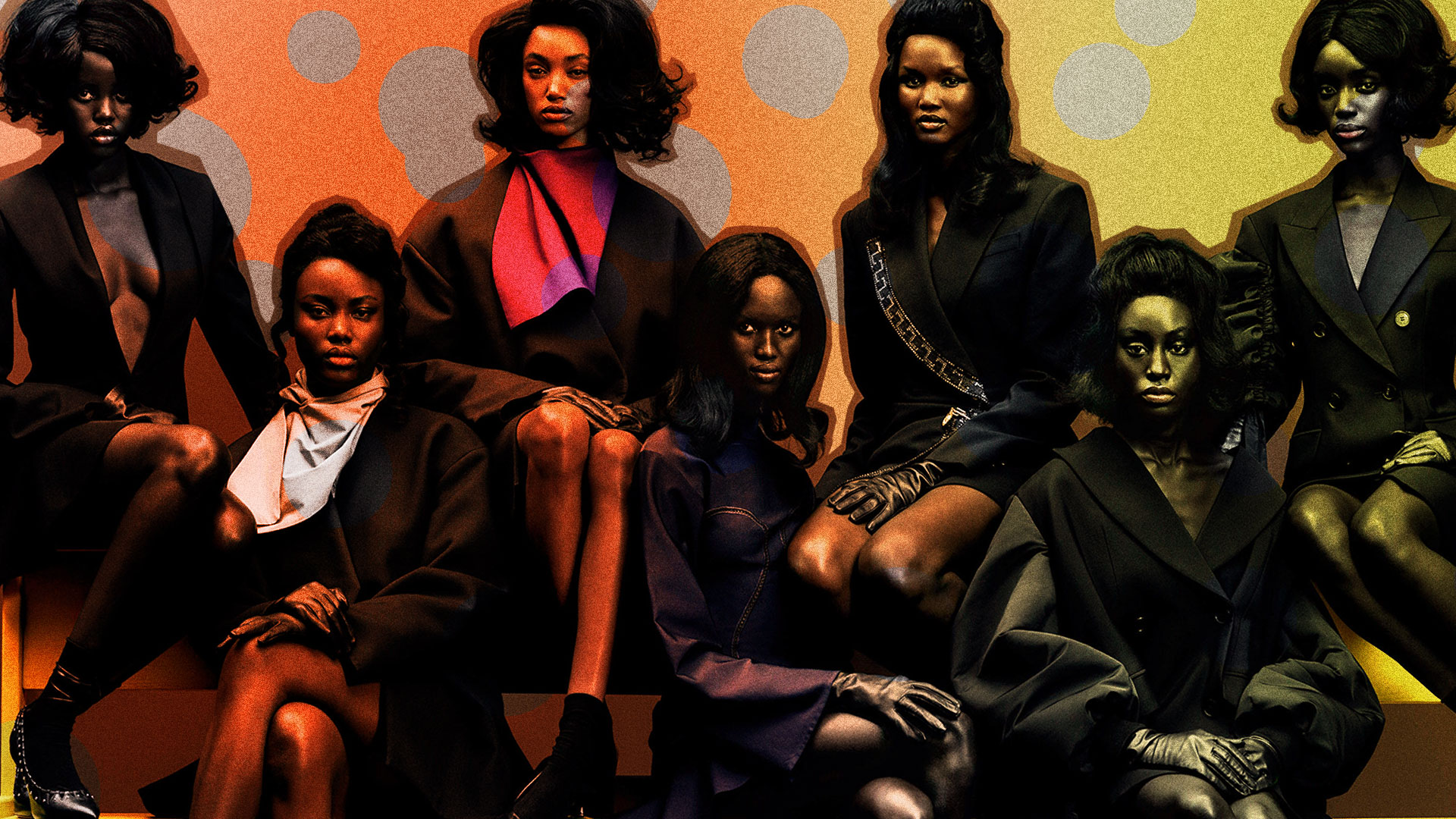
British Vogue’s February 2022 issue succeeded in representation but is representation always good when it exotifies and potentially dehumanises the community that it’s trying to “uplift”?
British Vogue revealed their cover for their February 2022 issue, and it was met with celebration and criticism worldwide. The cover made history by being one of the first Vogue covers to feature nine black models, titled Fashion Now. The issue celebrates the rise of African models in high-end fashion, styled by Vogue’s first Black Editor-In-Chief, Edward Enniful and Brazilian photographer; Rafael Pavarotti. The cover starred models; Adut Akech, Amar Akway, Majesty Amare, Akon Changkou, Maty Fall, Janet Jumbo, Abény Nhial, Nyagua Ruea and Anok Yai.
Stunning. That was my first thought as I double-clicked the cover reveal on Vogue’s Instagram. The image of exclusively dark-skinned women, adorned in luxury items, staring deeply into the camera, captured by the impeccable Pavarotti is no question a spectacular image. It is a beautiful moment to witness; as a black woman in the industry. Seeing the representation that my childhood self yearned for as I walked past the magazine aisle and only saw fair, skinny, euro-centric cis women looking back at me.
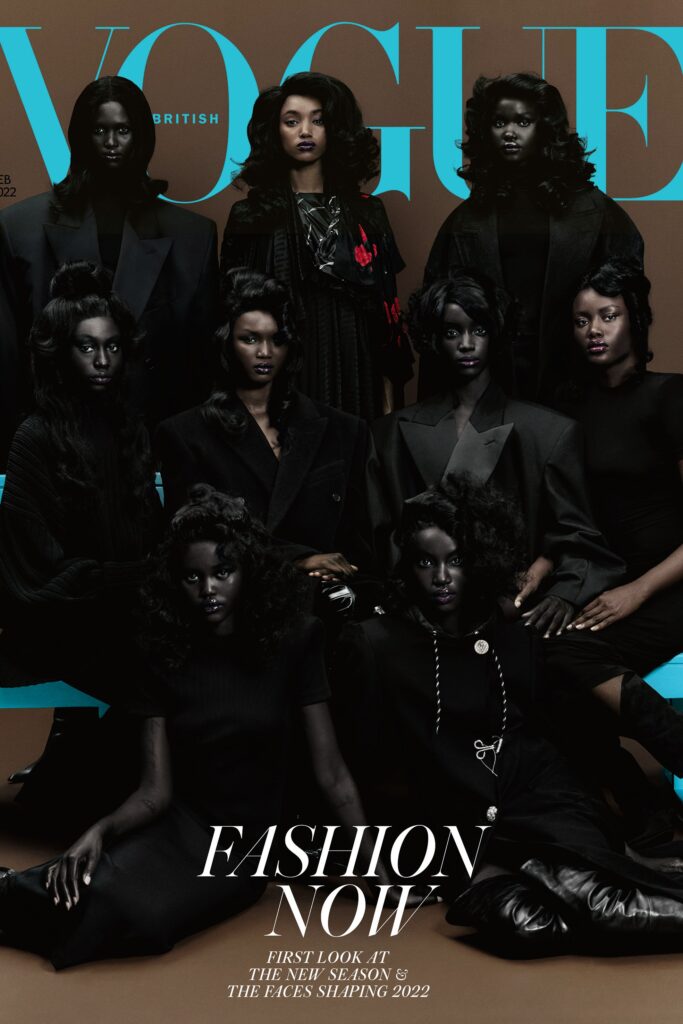
It has been over 100 years since that magazine covers have been communicating to society the pinnacle of beauty at that moment. Though we have moved to the digital world, the premise remains the same. A cover in a publication like Vogue Magazine is a direct public service announcement to the fashion industry and the rest of us that fall into its system that whatever and whoever is on that cover is what is HOT right now.
After the initial excitement of seeing the cover, possible cynicism or underlying colourist trauma that remains true of any black girl who’s ever been on social media came to the surface.
I had to ask why? Why now? And Why in this way? The comment section began to ask the same questions, and it seemed that many had already drawn up their conclusions. One commenter said. “All those amazing models represented (finally) and yet, no one wearing natural hair, really?”. Another added, “It’s great that they got dark-skinned models, but why not show their beauty. Did they forget to pay the light bill?” Referencing the dark lighting and extreme editing of the image to make the models appear much darker than they are in real life.
In Vogue’s statement about the cover, they said, “With a new generation of models in the spotlight, fashion is, at last, embracing what it is to be truly global. The nine models gracing the cover are representative of an ongoing seismic shift that became more pronounced on the SS22 runways; awash with dark-skinned models whose African heritage stretched from Senegal to Rwanda to South Sudan to Nigeria to Ethiopia.” Vogue concluded the statement by saying, “For an industry long criticised for its lack of diversity, as well as for perpetuating beauty standards seen through a eurocentric lens, this change is momentous.” I laughed out loud at the last point; this was not the revolutionary cover that Vogue thought it was.
This is the most euro-centric representation of Black women in high-end fashion that I have ever seen in recent memory.
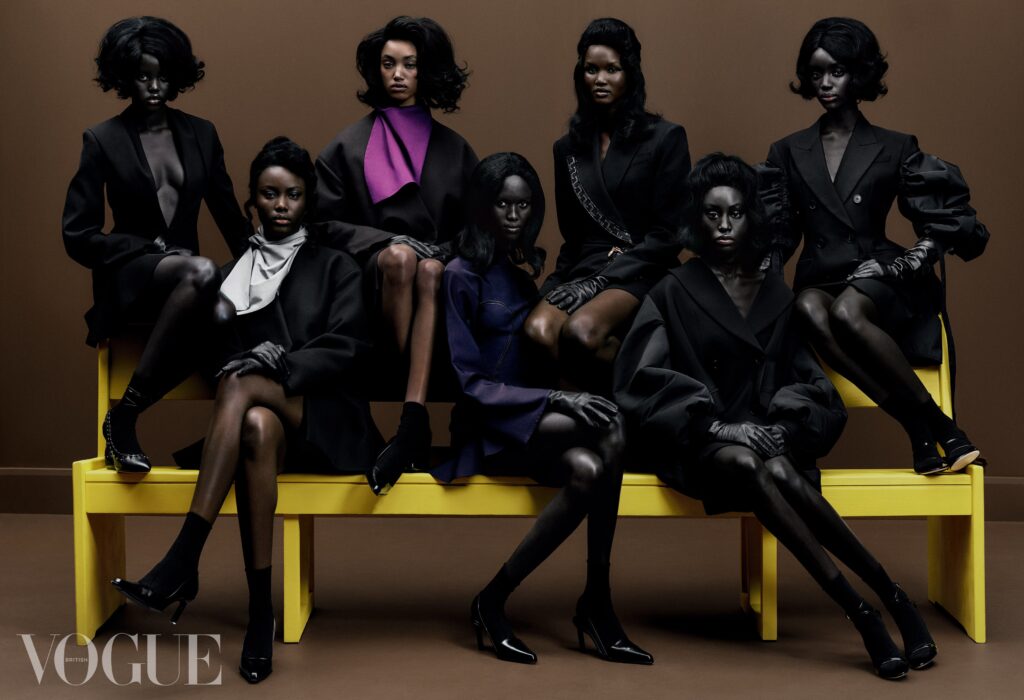
My mind trailed back to a scene in Jordan Peel‘s Get Out, where the unsuspecting Chris (played by Daniel Kaluuya) is being vetted by the non-Black wealthy auctioneers, with one commenting that “Black…is in Fashion.” If you have any idea on how that movie reveals how far non-Black people in power will go to acquire the beauty of Blackness, then you can understand my sudden distaste for this beautiful image that also represents so much that is wrong in the fashion industry.
If you have been following fashion, then you will know it’s an endless wheel of trend cycles that includes the on and off representation of Black women. However, in the last decade, publications have had no choice but to do their best to look like they are centring diversity to ensure that the younger and woker generation remain invested in what they are selling. Whilst there has been an increased presence of Black women in the fashion industry, it seems that the world of high-fashion has taken to casting dark-skinned Black models – and dark-skinned Black models alone.
In a society where colourism deeply affects dark-skinned Black women, shouldn’t we celebrate this representation of beauty in an industry that commodifies beauty?
Maybe. But in an industry that is strongly led by the euro-centric male gaze, does this representation of dark-skinned Black women come from a place of wanting to change the industry for the better or is it just a box-ticking diversity stunt that is seeking virality whilst exotifying and fetishisation dark-skinned Black women.
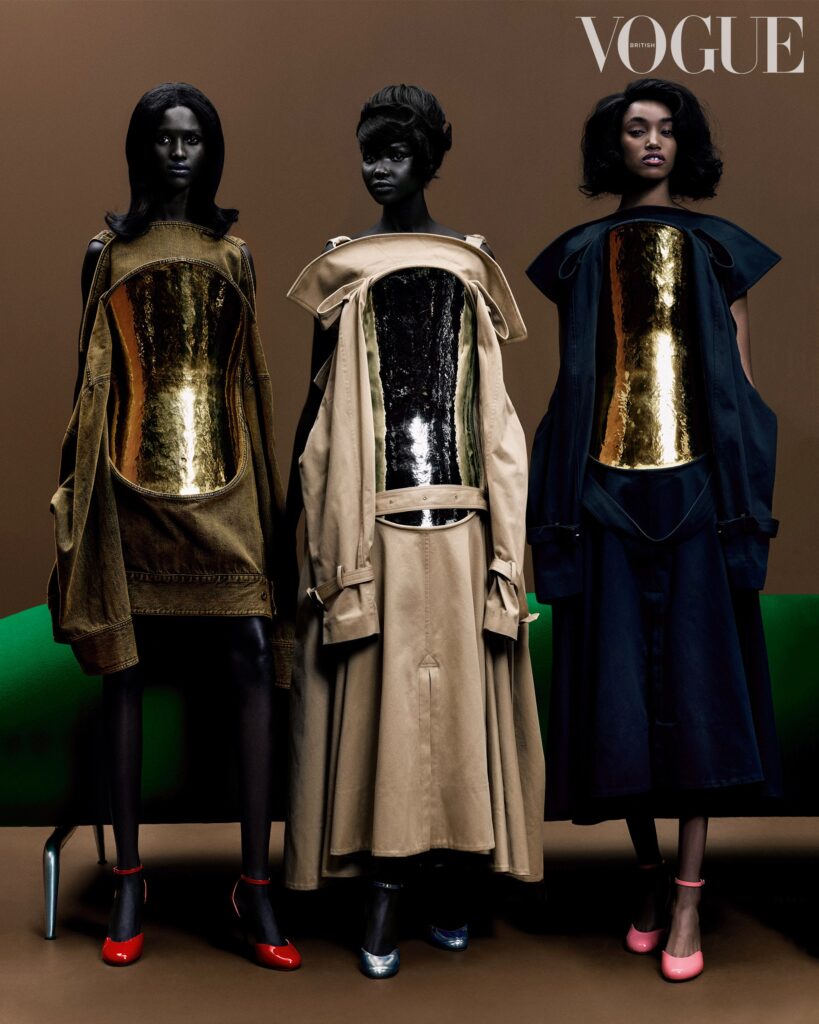
Realising this trend way before the British Vogue cover dropped, culture journalist, @thedarkesthue, asked her community, “How does the use of Black models as tools to emphasise visual contrast contribute to our dehumanisation and commodification?” The writer explored on her blog that as it stands, “Dark-skinned models, especially African models, have to be exceptionally dark to be successful. – Black models are only celebrated to the extent that they can be exotified and commodified for shock value.”
The reluctance to cast a realistic range of Black models has real consequences for Black women in the real world. When we are presented as entities that go beyond human in art and image, it risks robbing dark-skinned women of their humanity even when painted under the broad stroke of “beauty” and “representation.”
The February Issue is on newsstands from Tuesday 18th January 2022. Will you be buying a copy?
Check out the GUAP Arts & Culture section, to discover new art, film, and creative individuals.




![ZINO VINCI’S ‘FILTHY & DISGUSTING’EP BRINGS YOU TO THE CORE OF THE ARTIST [@ZinoVinci]](https://guap.co/wp-content/uploads/2023/10/Zino-4.jpg)

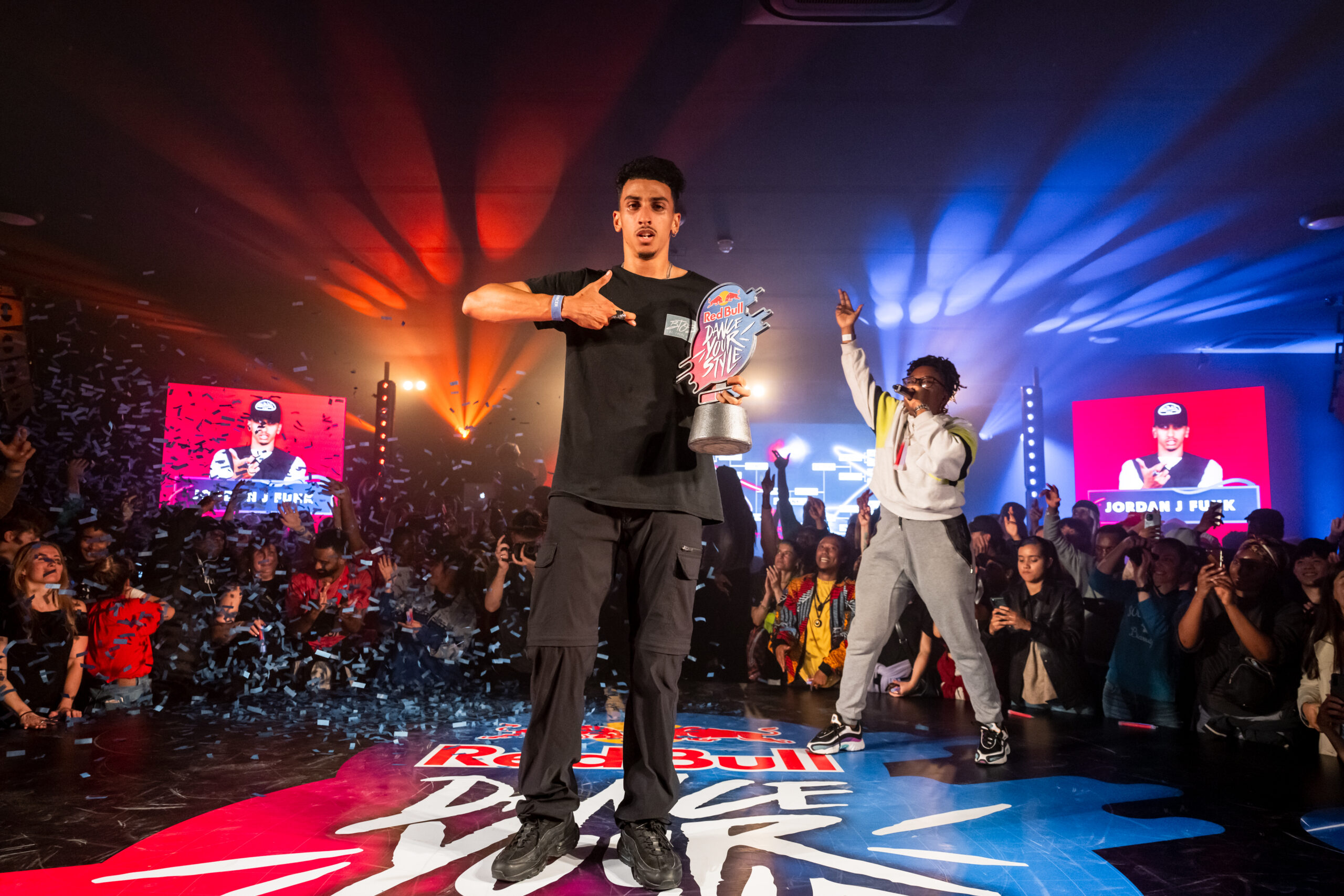
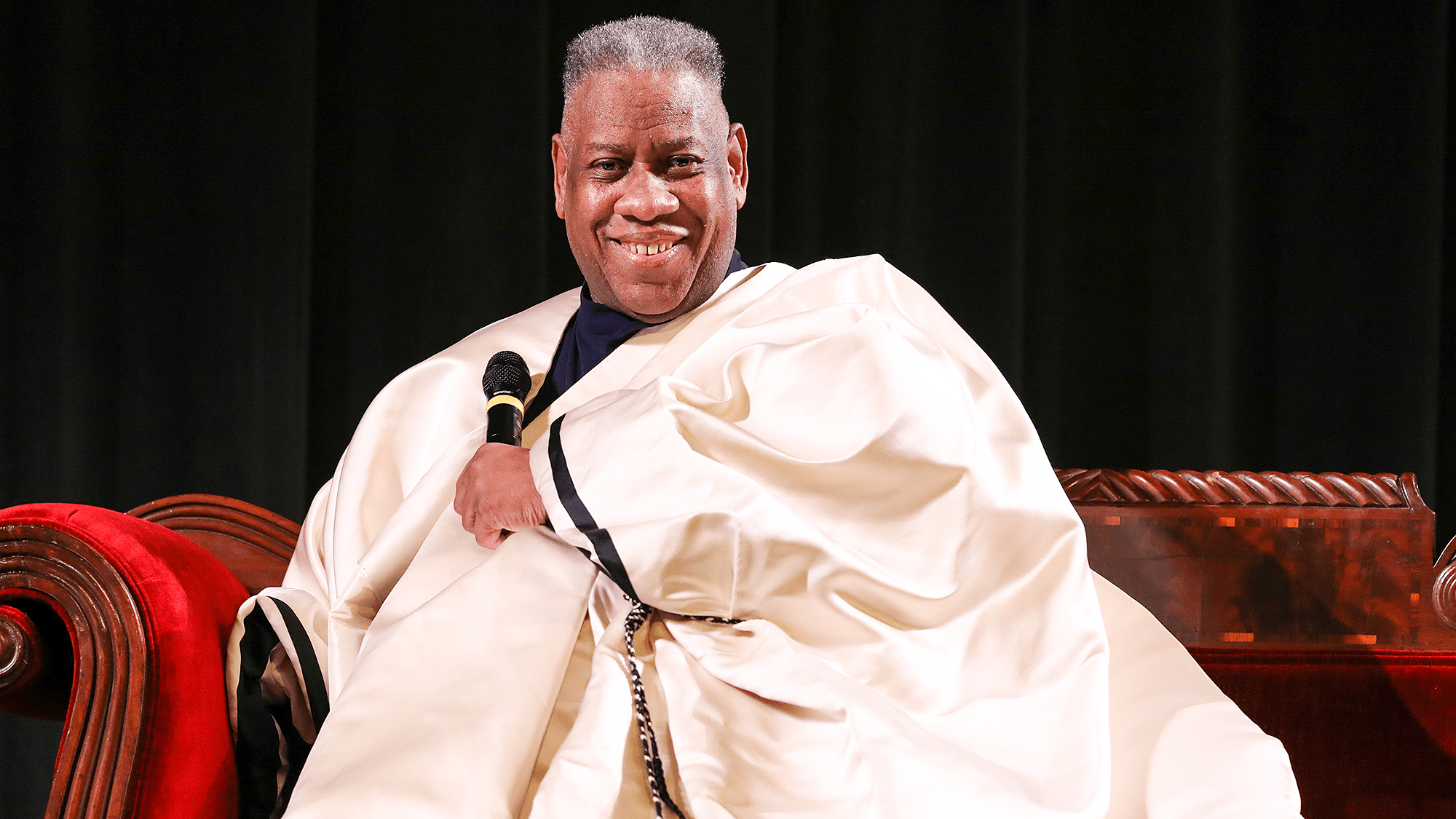


![Remel London’s [@Remel_London] “Mainstream” is a must attend for upcoming presenters!](https://guap.co/wp-content/uploads/2017/02/REMEL-LONDON-FLYER-FINAL-YELLOW-COMPLETE-1.png)